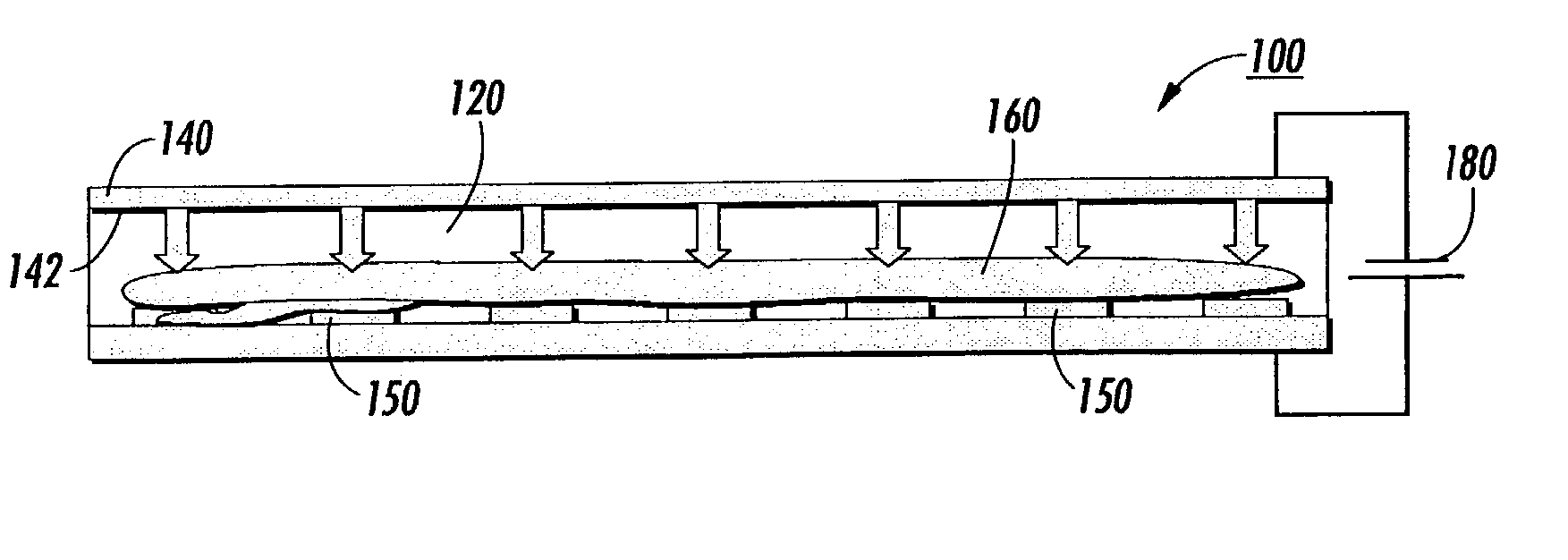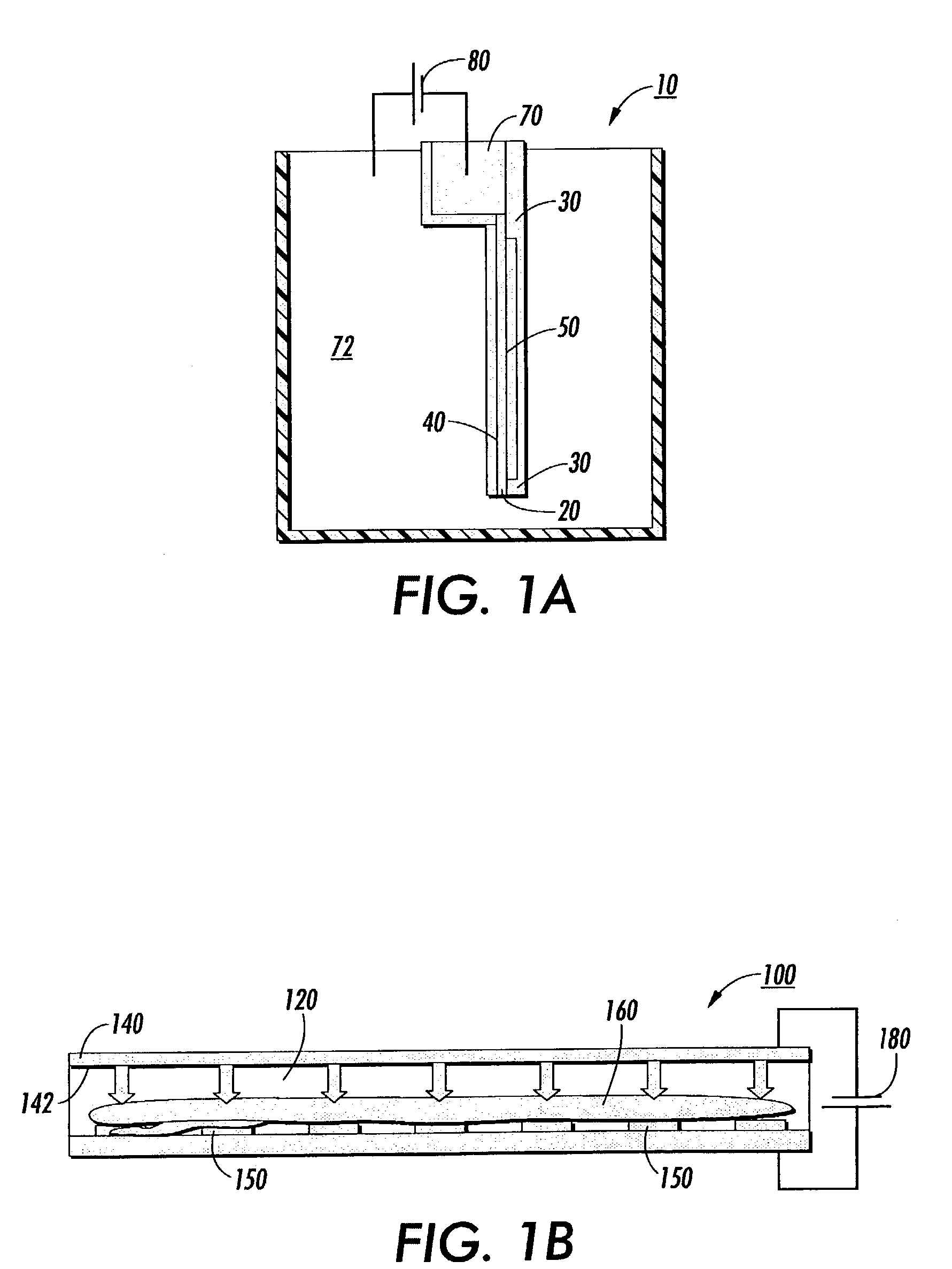Distributed multi-segmented reconfigurable traveling wave grids for separation of proteins in gel electrophoresis
- Summary
- Abstract
- Description
- Claims
- Application Information
AI Technical Summary
Benefits of technology
Problems solved by technology
Method used
Image
Examples
Embodiment Construction
[0040]Separation and identification of biomolecules such as proteins and DNA is an important step in biotechnology. In this post-genomic period, 2D gel electrophoresis is emerging as the workhorse for protein separation. The methodology is 30 years old and has seen mostly minor technology improvements. The present invention speeds up processing time by a two step approach. First, an initial separation is performed using a distributed multi-segmented traveling wave (TW) electrode grid system which is optimized for enhanced protein loading and fast transport. Second, the sub-samples of separated proteins are further refined or focused using specific purpose TW processing algorithms on the decoupled local TW grids. The primary objective of using electrostatic traveling waves is the very rapid transport possible by creating very high local E fields with low voltages using an electrode grid with a very fine pitch. Advantages over conventional gel setups include lower voltage (1 V compare...
PUM
| Property | Measurement | Unit |
|---|---|---|
| Length | aaaaa | aaaaa |
| Length | aaaaa | aaaaa |
| Length | aaaaa | aaaaa |
Abstract
Description
Claims
Application Information
 Login to View More
Login to View More - R&D
- Intellectual Property
- Life Sciences
- Materials
- Tech Scout
- Unparalleled Data Quality
- Higher Quality Content
- 60% Fewer Hallucinations
Browse by: Latest US Patents, China's latest patents, Technical Efficacy Thesaurus, Application Domain, Technology Topic, Popular Technical Reports.
© 2025 PatSnap. All rights reserved.Legal|Privacy policy|Modern Slavery Act Transparency Statement|Sitemap|About US| Contact US: help@patsnap.com



